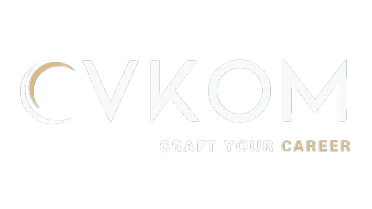How to Write a Resume for Freelancing Jobs
Freelancing has become a popular career choice for professionals across various
industries. Whether you’re a graphic designer, writer, developer, or
consultant, having a strong resume tailored for freelancing jobs is essential.
A freelancing resume differs from a traditional one, as it needs to highlight
your diverse skill set, independent projects, and ability to deliver results.
At CVKOM, we help freelancers craft resumes that win clients and projects.
Follow these steps to write a compelling resume for freelancing jobs.
1. Begin with a Professional Summary
Start your resume with a short, impactful summary. Describe who you are, your
area of expertise, and the value you provide to clients. For example,
"Experienced freelance graphic designer specializing in branding and web
design, delivering creative solutions to over 50 clients worldwide."
2. Highlight Your Key Skills
Freelancers often work across various niches, so it’s important to showcase
both technical and soft skills. Create a dedicated “Skills” section and include
relevant keywords such as “project management,” “content creation,” “SEO
expertise,” or “client communication.”
3. Emphasize Your Freelance Experience
Dedicate a section to your freelancing work. List your projects chronologically
or group them by industry or skill. Include the project name, client (if not
confidential), and a brief description of your role and achievements.
Example:
Freelance Web Developer
Project: E-commerce Website for Local Retailer
- Designed and developed a fully functional e-commerce website, increasing
online sales by 40%.
- Implemented SEO strategies to improve website traffic by 30%.
4. Incorporate Testimonials or Client Feedback
Client testimonials are powerful tools to build credibility. Include a section
with short quotes or feedback from previous clients, demonstrating your
professionalism and results.
5. Include Relevant Certifications
Showcase any certifications that add value to your freelancing niche, such as
Google Ads certification, HubSpot Content Marketing, or Adobe Creative Cloud
expertise.
6. Focus on Achievements
Clients hire freelancers to achieve specific results. Highlight measurable
achievements in your work, such as increased ROI, improved engagement rates, or
completed projects under budget.
7. Tailor for Each Job
Freelancers often apply for diverse projects. Tailor your resume for each
opportunity by emphasizing relevant skills and experience for the specific role
or client.
8. Add a Portfolio Section
Freelancing resumes benefit from a portfolio showcasing your best work. Include
a link to your personal website or attach a PDF with samples of completed
projects.
9. Keep It Simple and Professional
Avoid overly complex designs or flashy graphics that could distract from the
content. Stick to clean formatting with clear headings and bullet points.
10. Use Freelance-Specific Keywords
Many clients use freelance platforms or job boards to find candidates. Useindustry-specific and freelance-related keywords to optimize your resume for
these platforms. Terms like “remote work,” “gig economy,” and “freelance
specialist” can help your resume rank higher.
11. Include Your Tools and Platforms
Freelancers often rely on tools like Trello, Asana, Slack, or industry-specific
software. Mentioning your proficiency with these tools adds value.
12. Optimize for ATS
Even freelance job applications can go through Applicant Tracking Systems
(ATS). Ensure your resume is ATS-friendly by using standard formats and
avoiding unnecessary images or graphics.
13. Add Networking and Collaboration Examples
Demonstrate your ability to collaborate effectively by including examples of
teamwork or partnerships with other freelancers or clients.
14. Mention Long-Term Clients
Highlight any long-term freelance relationships. These demonstrate your
reliability and ability to deliver consistent results.
15. Save and Share Correctly
Save your resume in commonly accepted formats like PDF or Word. Use a
professional file name such as “Freelance_Resume_YourName.pdf.”
Final Thoughts
A strong freelancing resume is more than just a document—it’s your gateway to
securing clients and growing your business. By following these tips and
optimizing your CV for freelancing opportunities, you’ll stand out in a crowded
marketplace. At CVKOM, we specialize in crafting professional resumes for
freelancers across industries. Contact us today to take your freelance career
to the next level!
Optimize your resume now with CVKOM and start attracting high-paying
freelancing jobs!




